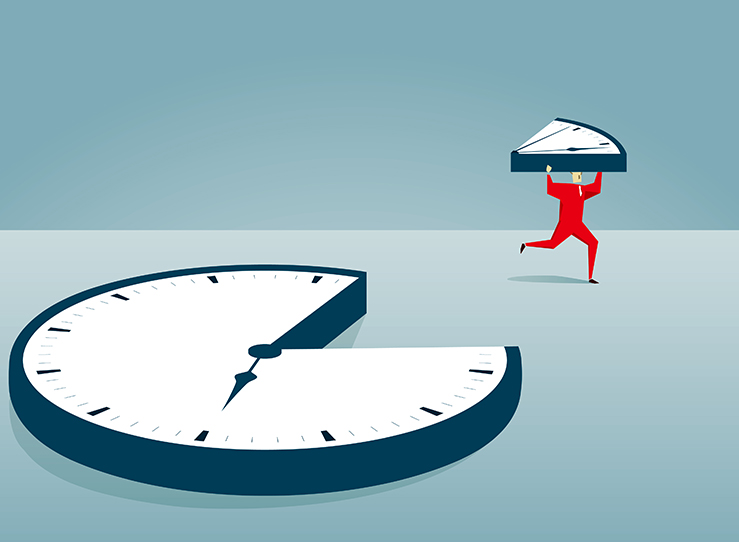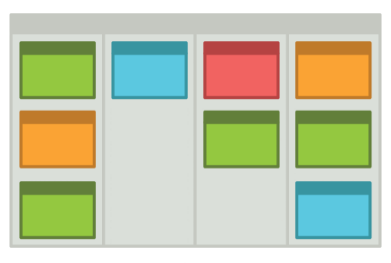
The dreaded question, “Do you have five minutes?” seems to be relatively harmless on the surface; who doesn’t have five minutes to spare? Everyone wants to be helpful — which is why you’re always willing to put down what you’re doing to hear your coworker’s burning questions. Then, you struggle to wrap your head around the context of their issue, and engage in the inevitable knowledge transfer required to catch up to their thought process.
Somehow, five minutes has turned into 20 minutes. You’ve deposited your answer and they leave content with the outcome. You finally get back to your computer, ready to pick up where you left off — but you get stuck: “Where was I again?”
The Context Switch That Keeps On Switching
As you try to recall the last thing you were doing, that “five minute” conversation creeps back into your mind: “Did I give them good advice? Did I answer their question completely?” You know whatever off-handed answer you just gave is going to be socialized with your name on it. Was it the answer you would’ve given if you’d had more time to think it through?
You might feel the need to send a clarifying follow-up email — adding another 10 minutes to this “five-minute” question. It takes you another 15 minutes to resume the work you had originally intended to do, 45 minutes behind schedule.
How Kanban Helps

Kanban boards enable more effective communication than these “quick” exchanges. Instead of simply conveying where work is, you can discuss how to move tasks forward to a successful completion. Visualizing work makes communication healthier for both the doer and the observer. Communication is also faster when both sides are presented with a common place to “go look” at the work.
Visualize your work on a Kanban board to quickly convey status, highlight bottlenecks in the process, identify blocked tasks and display comments in the context of the task on the cards.
Dedicate Time to Problem Solving
Kanban is a very effective tool for communicating current status — but it isn’t intended to replace face-to-face communication, especially when it comes to complex problem solving. Some problems can be solved with a short meeting between one or two people, while others would benefit from a team discussion.
We have to set aside time to have informal conversations with no real agenda, other than to discuss team problems that need to be solved. Face-to-face team sessions provide a forum to dive into complex problem solving, with a shared understanding of context and the issues at hand. In the Lean world, these sessions are called Lean coffees. Holding regular Lean coffees is a great way of practicing continuous improvement with your team.
You can use a Kanban board to capture pressing topics between sessions. Allow everyone on your team to add cards (representing issues to discuss) to this board, and hold a regular meeting to go through it. Use the board to keep your discussions focused by moving each card into the familiar lanes of “To Do, Doing, and Done”.
I like to schedule meetings back-to-back, on the same day with other team members; that way, we can stay in the mindset that our context will change rapidly. By having conversations back-to-back, we can cut down on “knowledge transfer” time if others have the same schedule for the meetings.
Final Thoughts
Your brain operates in a LIFO (Last In First Out) method; thus, context switching can be extremely detrimental to your productivity — especially if you’re being measured on the oldest thing on your to-do list. Keep track of your team’s daily work on a Kanban board, to eliminate the need for status updates and make it easier to jump back into work if you get interrupted. Use a Kanban board to capture team problems that need to be discussed, and hold regular team sessions to collaborate to solve complex problems.
If you see someone in the office in a hurry with their eyes lowered, go check their Kanban board to get a current status of their tasks instead of stopping them for a “quick” chat. We all want to feel important, needed and helpful — so most people will rarely choose not to help you if you stop them with a question. But these good intentions can be costly, and can lead to more frustration over time across your whole team.
Going from working in an environment that did not use task visualization to working in an environment that lives by it, it’d be very difficult to go back to the old way. It’s so much better to see your work flow and watch day-to-day problems get solved visually… all while avoiding unnecessary, costly context switching.
![A Global Collaborative Work Management Blueprint [Video]](https://blog.planview.com/wp-content/uploads/2019/07/A-Global-Collaborative-Work-management-blueprint.png)



